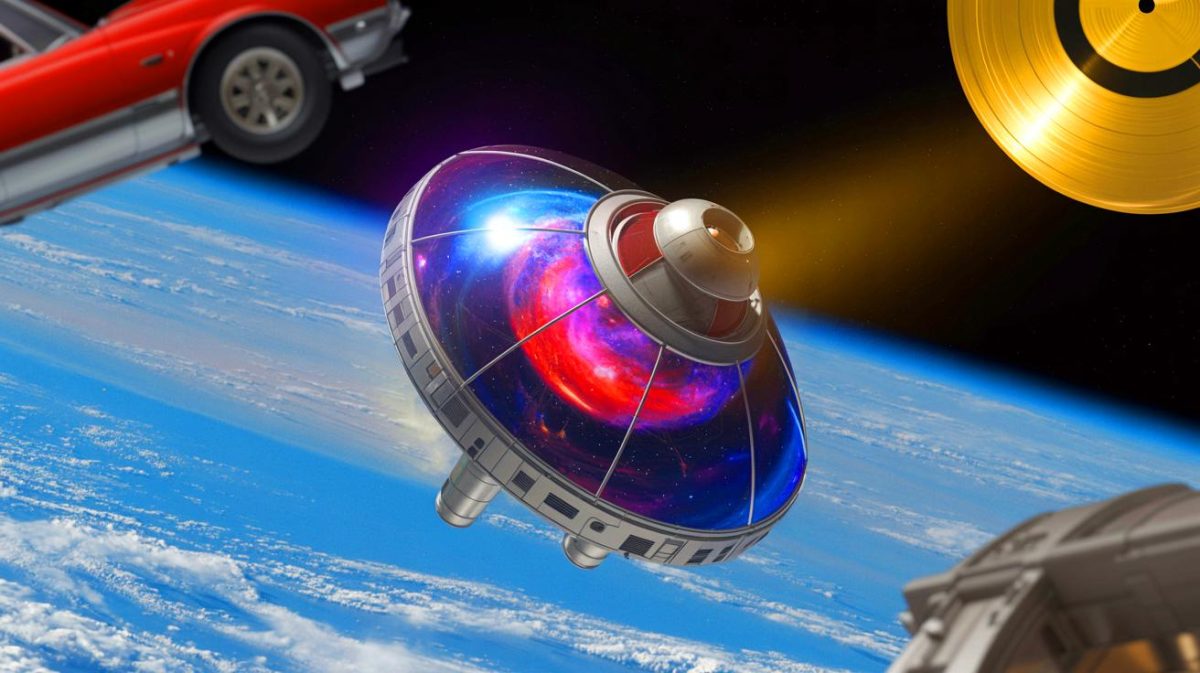| IN A NUTSHELL |
|
Since the dawn of the Space Age, humanity has ventured beyond Earth, sending not only satellites and scientific instruments but also cultural artifacts into the cosmos. These missions have carried messages and memorabilia that mark our presence in the universe. From the Apollo plaques to the more recent UNESCO Memory Disk, these endeavors aim to preserve human culture for future generations and potential extraterrestrial discoverers. As we continue to explore space, the legacy of these missions remains a testament to human curiosity and the desire to leave a mark on the universe.
Apollo 17: The Last Footprints on the Moon
The Apollo 17 mission marked a significant moment in space exploration as the last manned mission to the Moon under the Apollo program. The lunar lander carried a plaque commemorating this historic mission. The inscription read, “Here man completed his first explorations of the Moon December 1972, A.D. May the spirit of peace in which we came be reflected in the lives of all mankind.” This plaque underscored the peaceful intentions of space exploration and the hope that such endeavors would inspire unity among humankind.
The plaque also featured the names of the astronaut crew—Eugene A. Cernan, Ronald E. Evans, and Harrison H. Schmitt—and the signature of then-President Richard Nixon. While the Apollo 11 mission is often celebrated for its role in beginning the era of lunar exploration, Apollo 17 symbolized the closing chapter of the initial Space Race. This mission’s legacy continues to inspire future generations to explore and understand our celestial neighbor.
Musk’s Cherry Roadster: A Modern-Day Space Oddity
On February 6, 2018, SpaceX launched a unique payload into space: a cherry-red Tesla Roadster owned by Elon Musk. This vehicle, complete with a mannequin named “Starman” in the driver’s seat, was part of the inaugural test flight of the Falcon Heavy rocket. The mission demonstrated the rocket’s capabilities and captured global attention with its unorthodox cargo.
The Roadster was deployed into an elliptical orbit around the sun, crossing Mars’ orbit. This feat made it the first production car launched into space. The car’s journey through space serves as a symbol of human ingenuity and the ever-evolving relationship between technology and exploration. While the vehicle is expected to drift through the Solar System for millions of years, its enduring presence raises questions about the future of space travel and the legacy we leave behind.
The UNESCO Memory Disk: Safeguarding Earth’s Linguistic Heritage
In 2024, UNESCO collaborated with commercial space companies to launch the “Memory Disk” to the Moon. This nano-engraved nickel plate contains recordings of 275 Earth languages and various cultural artifacts. The initiative aims to preserve humanity’s linguistic diversity and cultural heritage, recognizing the importance of these elements in shaping our worldviews.
The Memory Disk bears the Preamble of the UNESCO Constitution, translated into 275 languages, reflecting the organization’s commitment to peace and cultural preservation. Although the first mission faced challenges during its lunar landing, the disk remains a testament to human resilience and the desire to protect our shared heritage. Future iterations of the project will continue to reinforce the message of unity and the importance of safeguarding our cultural legacy.
Space Burial: Resting Among the Stars
Space burial, the practice of sending cremated remains into space, represents a unique way of honoring individuals who have contributed to science and exploration. Notable figures like Clyde Tombaugh, the discoverer of Pluto, have had their ashes carried into the cosmos. Tombaugh’s remains joined the New Horizons mission, which passed Pluto in 2015, securing his place in the longest post-mortem spaceflight in history.
Additionally, several members of the Star Trek cast and crew have chosen space as their final resting place. Gene Roddenberry, the creator of the series, had his ashes flown aboard the Space Shuttle Columbia, while other portions were included in commercial space flights. These symbolic gestures highlight the enduring connection between human culture and the vastness of space. As more individuals choose this celestial resting place, space burial continues to explore the intersection of human legacy and the infinite possibilities of the universe.
As humanity continues its journey into space, the artifacts and messages we send serve as a reflection of our values, achievements, and aspirations. These endeavors not only preserve our cultural heritage but also raise intriguing questions about our role in the universe. What will future generations discover about us, and how will they interpret the legacy left behind by these cosmic messages?
Did you like it? 4.5/5 (30)








Est-ce vraiment sage d’envoyer des messages à des civilisations extraterrestres? 🤔
Je trouve fou que nous dépensions 1 milliard pour un message spatial alors que tant de problèmes restent sur Terre. 😡
Merci la NASA pour continuer à nous faire rêver avec ces projets ambitieux. 🚀
Y a-t-il des chances que ce message soit reçu avant que l’Humanité ne s’éteigne? 😅
Qu’est-ce qui se passe si les extraterrestres n’aiment pas notre message? 😱